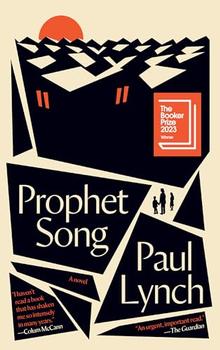Summary | Excerpt | Reading Guide | Reviews | Readalikes | Genres & Themes | Author Bio

The Story of Lois Jenson and the Landmark Case that Changed Sexual Harassment Law
by Laura Leedy Gansler, Clara Bingham
The Forbes Fairlane Plant evoked fear in a newcomer. Dominated by four cavernous buildings, the fine crusher, the surge, the concentrator, and the pellet plant, the facility sprawled over 2.3 million square feet--as if all 102 floors of New York's Empire State Building (2.1 million square feet) were spread end to end across the snowy Iron Range. That didn't even include the Thunderbird Mine, two open pits devouring 8,600 acres, from which spewed the iron ore-rich taconite rock that was mined. The plant operated 24 hours a day, 7 days a week, and consumed 70 megawatts of electricity per hour--about as much as the neighboring cities of Virginia, Eveleth, and Hibbing combined. The year the women started, the management of Eveleth Mines had ordered Forbes Fairlane's production capacity be expanded from 2.4 million tons of taconite pellets a year to 6 million tons. Everywhere she looked, Lois could see construction crews at work upgrading and enlarging the facilities.
Taconite rocks contain between 20 and 30 percent iron ore, a foreman explained to her. The taconite was blasted out of "the pit," as everyone called Thunderbird, which was located nine miles away, on the outskirts of the town of Eveleth. There, the boulders were loaded into trucks and brought to the pit's "primary crusher," where they were broken down to the size of footballs. A long line of railroad freight cars transported the rocks from the pit to the plant. The taconite was then carried by conveyor belt to the fine crusher--the first stop in a long, pulverizing process--where the rocks were ground into taconite gravel.
The crusher was outfitted with eighty-foot-high rock-crushing machines and a dizzying maze of conveyor belts. Before she could even take in the scene, Lois was gagging from the black dust that filled the air, like thick smoke in a crowded bar. She could barely distinguish one thunderous machine from another as she struggled to adjust her eyes to the haze. Sticky dust coated her exposed skin and hair, suffocating her. Even more disorienting was the noise. The crusher spoke in a giant, booming voice and the constant smashing of the rocks in the teeth of the machines made earplugs mandatory. Because the dust contained cancer-causing silica, the men also wore white paper masks over their mouths. The earplugs and the mask plunged Lois into a kind of isolation she had never experienced in a workplace before.
She was grateful for the relative peace of the concentrator, her next stop on the tour, until its foreman, John Maki, led her up to the building's catwalks. Unaccustomed to the weight of her work boots, Lois could barely lift her legs as she and Maki climbed higher. The clunky metatarsal guards on top of the boots kept catching as she stepped from one platform to another. Until now she had not known that she was afraid of heights. Skyscrapers in Minneapolis had never bothered her. But now she couldn't bring herself to walk to the edge of the grated catwalk and look straight down ten stories.
The first purpose of the concentrator was to grind the gravel to a sandlike consistency, using rod mills, which were large rolling tubes containing steel rods. Another set of revolving drums filled with magnets then separated the iron-bearing grains of ore, or "concentrate," from the waste rock, or "tailings." After passing through the crusher and the concentrator by way of a labyrinth of conveyor belts, the wet concentrate arrived at its final destination, the pellet plant.
The dirt here was overwhelming. The air, walls, and floors in the pellet plant were filled and coated with black soot the consistency of flour. Her every step left a footprint as she walked out of the service elevator on the top floor of the building and gazed down 100 feet at a panorama of revolving steel machines all lined up in rows like dryers in a monstrous Laundromat. These were the huge round rotating balling drums, churning and thundering so powerfully that they made her heart race. The balling drums rolled clockwise all day, shaping wet black concentrate into round, marble-sized pellets. Thousands of black pellets rolled inside the drums on the first floor of the pellet plant. They were then hardened in a 120-foot-long rotating kiln fired at 2,400 degrees. The end product was millions of smooth, heavy black pellets containing 65 percent iron ore, ready to be loaded onto train cars for the 60-mile trip to the Lake Superior ports of Duluth and Two Harbors. From there, the pellets were loaded onto huge freighters and shipped to steel mills in Chicago, Gary, Cleveland, and Pittsburgh.
Excerpted from Class Action by Clara Bingham and Laura Leedy Gansler. Copyright 2002 by Clara Bingham and Laura Leedy Gansler. Excerpted by permission of Doubleday, a division of Random House, Inc. All rights reserved. No part of this excerpt may be reproduced or reprinted without permission in writing from the publisher.




If every country had to write a book about elephants...
Click Here to find out who said this, as well as discovering other famous literary quotes!
Your guide toexceptional books
BookBrowse seeks out and recommends the best in contemporary fiction and nonfiction—books that not only engage and entertain but also deepen our understanding of ourselves and the world around us.